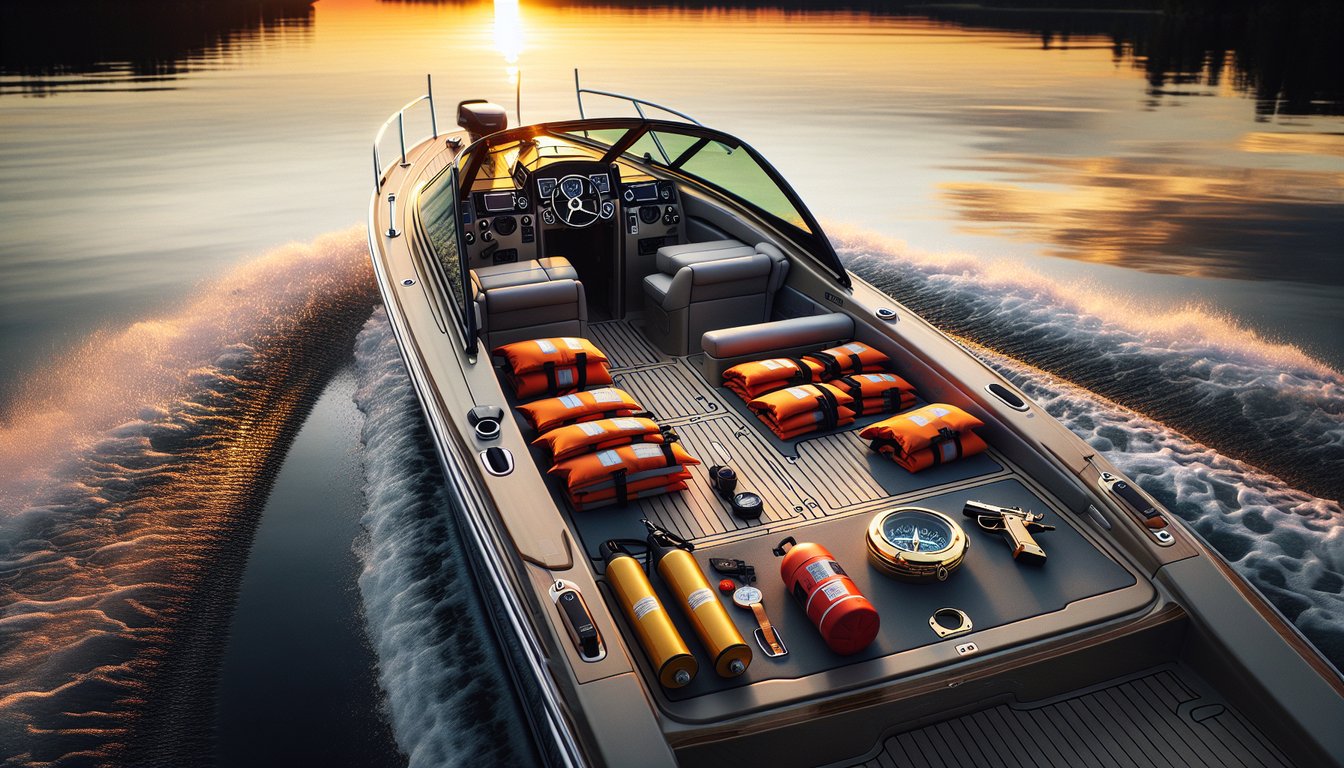Embark on a journey of safety with our ultimate guide to essential boating gear. Discover how the right equipment can turn your recreational boating into a thrilling yet secure adventure on the water
Embarking on a recreational boating adventure can be one of life’s greatest pleasures. However, ensuring that you and your loved ones remain safe is paramount. Proper preparation and the right safety gear can be the difference between a memorable experience and a distressing ordeal. With this in mind, let’s dive into the essential safety gear that should be on board every recreational vessel, ensuring peace of mind as you enjoy the crisp ocean air and the gentle sway of the waves.
Life Jackets and Personal Flotation Devices (PFDs)
At the core of boating safety, life jackets and U.S. Coast Guard-approved personal flotation devices (PFDs) are an absolute must. Each person on board should have access to a properly fitting PFD, and children should wear theirs at all times. The types vary from offshore life jackets to near-shore buoyant vests:
- Type I: Offshore life jackets, designed for rough or remote waters where rescue may take a while.
- Type II: Near-shore vests, suitable for calm waters and quick rescues.
- Type III: Flotation aids for general boating or specialized activities like water skiing.
Communication Devices
In the event of an emergency, being able to call for help is crucial. Your boat should be equipped with a VHF radio as a reliable means of communication. While cell phones are handy, they can suffer from poor signal strength offshore and their batteries can deplete quickly. Consider also an Emergency Position Indicating Radio Beacon (EPIRB) or a Personal Locator Beacon (PLB) for solitary ventures or in areas where immediate assistance may be hard to reach.
Navigational Aids
While modern GPS systems have simplified navigation, traditional tools like maps and compasses should also be on board as backups. Having a sound signaling device such as a horn or whistle can help in foggy conditions or to signal other vessels.
Fire Extinguishers
Boat fires, although rare, can be devastating. It’s essential to have a fire extinguisher on board, and more importantly, ensure it’s in working condition and that all passengers know how to use it. The number and type of extinguishers required may vary by boat size and type.
First Aid Kit
A well-stocked first aid kit can manage minor injuries and stabilize more serious ones until professional medical help arrives. Your kit should include items like bandages, antiseptics, pain relievers, and seasickness medication.
Additional Safety Gear
There are still more items that can enhance safety on the water. An anchor can keep you from drifting if your engine fails. Visual signaling devices like flares or a mirror can attract attention from afar. Don’t forget a bailing device or bilge pump to remove water from the vessel. Lastly, a durable knife and a tool kit can assist with unexpected repairs.
Sailing into the sunset is more enjoyable when you’re well-prepared. Whether you’re listing your boat on The Afloat On A Boat Gallery or looking for your next seafaring adventure, remember that safety comes first. Equip your vessel with the essential gear outlined above and stay informed about maritime regulations and safe boating practices. May the winds be favorable, and your voyages be safe.
To stay updated on the latest in boating safety and to become a part of our vibrant boating community, consider subscribing to our blog for regular insights and advice. Safe travels and happy boating!







I don’t think the title of your article matches the content lol. Just kidding, mainly because I had some doubts after reading the article.
Thank you for your sharing. I am worried that I lack creative ideas. It is your article that makes me full of hope. Thank you. But, I have a question, can you help me?
Your point of view caught my eye and was very interesting. Thanks. I have a question for you.
Thank you for your sharing. I am worried that I lack creative ideas. It is your article that makes me full of hope. Thank you. But, I have a question, can you help me?